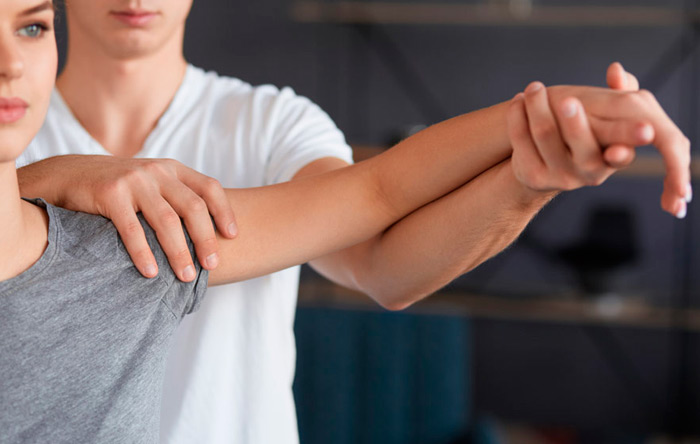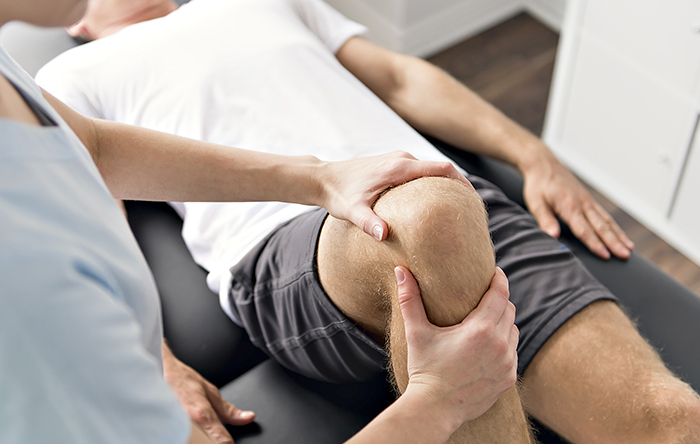Lower Extremity Injuries
Accelerate Physical Therapy
Physical Therapy for Lower Extremity Injuries
The Doctors of Physical Therapy at Accelerate Physical Therapy treat a variety of injuries sustained to the musculoskeletal system, and even more specifically injuries of the pelvis, hip, knee, ankle, and foot. Injuries to any of these body regions can be caused by a number of reasons, many of which include: motor vehicle accidents, blunt trauma, repetitive strain, overuse, postural, and walking and running among many others.
From your initial evaluation, we will determine the extent and cause of your injury, the source of your pain, your prognosis (i.e. how long your recovery will take in our professional opinion), and a customized treatment plan based on your learning style and specific injury.
Each of your physical therapy visits will be one on one with your Doctor of Physical Therapy, and because continuity of care is our highest priority you will see that same physical therapist for the duration of your treatment (outside of unforeseen circumstances).
To learn more about our physical therapy services or to schedule an appointment, call or text (949)502-3388, or click on the “Schedule Appointment” button below.

Injuries We Treat
Types of Lower Extremity Injuries We Treat
We offer evaluation and treatment for a variety of pelvis, hip, knee, ankle, and foot injuries. Listed below are some of the most common we see; however, if there is not an injury or condition you recognize on this list we highly recommend you speak directly to one of our Doctors of Physical Therapy to determine if it’s something we can treat and assist you with. If it is something that is out of our scope of practice, we will connect you with the resources you need to address the issue.
Our number one priority is to ensure you find the right treatment and know all available options to address your injury. We are available via email at info@ptaccelerate.com and by text/phone at (949) 502-3388 for any specific questions as they pertain to your specific injury and condition.
Muscle Strains
Ligament Sprains
Fractures
Tendinitis
Post-Surgical Injury
hese are common injuries you will research or hear about from an orthopedic specialist, pain management specialist, or your primary care physician. Ultimately, if it deals with bones, muscles, joints, tendons, and ligaments, a Doctor of Physical Therapy can be of service to you.
Benefits of Physical Therapy for Lower Extremity Injuries
In general, physical therapy treatment intends to reduce the amount of time it takes for an injury to heal. Although the body is designed to heal on its own, many factors can affect how quickly it recovers. The biggest factors and most pertinent to physical therapy include habitual postures, movement patterns, and daily routines involving posture and movement. Physical therapy aims to restore your body’s natural movement patterns, with reinforcement through education and movement retraining. This can include visual and tactile (touch and feel) cues combined with reminders on your specific postural and movement habits.
Specific to the pelvis, hip, knee, ankle, and foot are ways to reduce strain, which includes reducing excessive motion through each of these regions. Whether it’s how you stand, walk, squat, bend forward, run, or sleep, the strategy you use can make all of the difference. Physical therapy provides you with the knowledge to understand and learn the body through anatomy and biomechanics in order to alter your movement and apply these changes in daily life.

Physical Therapy Techniques
Physical therapy uses various techniques to improve your mobility, motor control, and muscle performance. Each of these things can be improved with education on the body, “hands on” soft tissue and joint mobilization, stretching, strengthening, scar tissue mobilization, exercise and movement re-education. It is directed at those individuals searching for pain resolution, improved movement, and a fast, non-invasive remedy for injuries. It can prevent surgeries, provide a second opinion after seeing a medical doctor, and determine whether there are functional ways to prevent pain. Last and not least, it can save you money. Research has shown physical therapy treatment is one of the most cost-effective ways to resolve pain and recover from an injury.
Services
Tools We Use to Treat Lower Extremity Injuries
We offer a range of orthopedic physical therapy treatment methods for maximum results.
Manual therapy is a very structured approach to delivering “hands on” physical therapy through the use of highly specific manual pressure, joint mobilization, and soft tissue mobilization in order to reduce tension, strain, guarding, spasm, and scar tissue restrictions throughout the body. Tissues affected can include muscles, joints, tendons, and ligaments. More recent additions to a physical therapist’s personal touch can include IASTM (Instrument Assisted Soft Tissue Mobilization) such as myofascial release, cupping, foam rolling and scraping (i.e. gua-sha). These techniques allow your physical therapist to improve the mobility throughout the spine so the body is able to move in a way that will allow reduced stress and strain to any injured tissues.
Therapeutic exercise involves a variety of movements to correct movement dysfunction. It is provided to correct impairments, restore muscular and skeletal function, and improve blood flow in injured tissues. The most common forms of therapeutic exercise involve strengthening exercises, endurance exercises, flexibility, and balance and coordination. The Doctors of Physical Therapy at Accelerate use a combination of therapeutic exercises and individualize them based on your current condition, prognosis, and specific injury.
Movement analysis of the pelvis, hip, knee, ankle, and foot involves your physical therapist analyzing the quantity and quality of specific movements that affect your injury. We will evaluate movements that increase your pain, and ask you to perform them in the clinic, via telehealth, or picture if needed. This can include standing, walking, bending, squatting, lunging, or balancing on one leg as examples. Movement analysis one on one with your physical therapist will allow you to see how your movement changes or alters your pain. Your physical therapist will educate you on ways to use your body to prevent pain and then reinforce these new movement patterns in your daily life. Follow-up physical therapy visits are intended to build upon a system to change the way you move and to keep it at the forefront of your mind as you live your life.
Neuro re-education is a technique used by physical therapists to restore normal movement. It involves the “brain-body connection” and specifically addresses motor control dysfunction and deficits. Think of it as nerve connections from the brain to a specific muscle or group of muscles throughout the body. This can include when, where, and how fast to move as well as initiating a muscle contraction, sequencing, and timing. Your physical therapist will utilize visual, audio, and tactile cues to improve your movement strategy and to “wake up” new muscles that are underutilized and relax those that are overutilized.

Service Options
We offer three service options for your convenience:
Accelerate Physical Therapy
Types of Injuries We Treat
The Doctors of Physical Therapy at Accelerate PT specialize in the evaluation and treatment of any and all orthopedic related injuries. Orthopedic injuries refer to anything affecting the musculoskeletal system (i.e. muscles, joints, ligaments, tendons, bones, as well as nerves as they interface through each of these structures). Sports specific injuries, work related injuries, and injuries caused by a motor vehicle accident fall under the orthopedic umbrella. Pre and post-operative care is intended to improve mobility, muscle performance, and motor control in individuals with surgical intervention to alleviate pain.



















